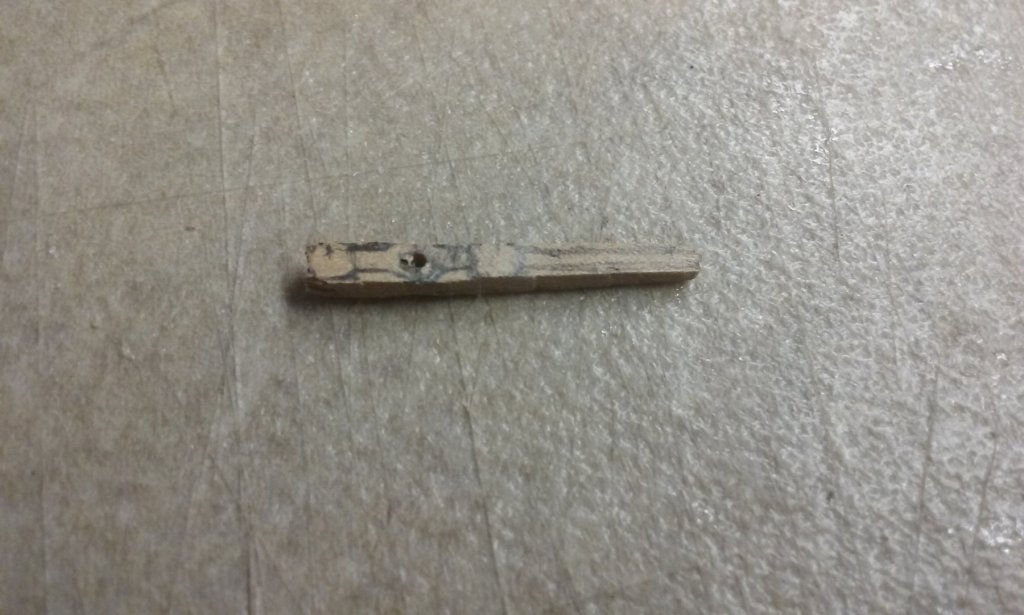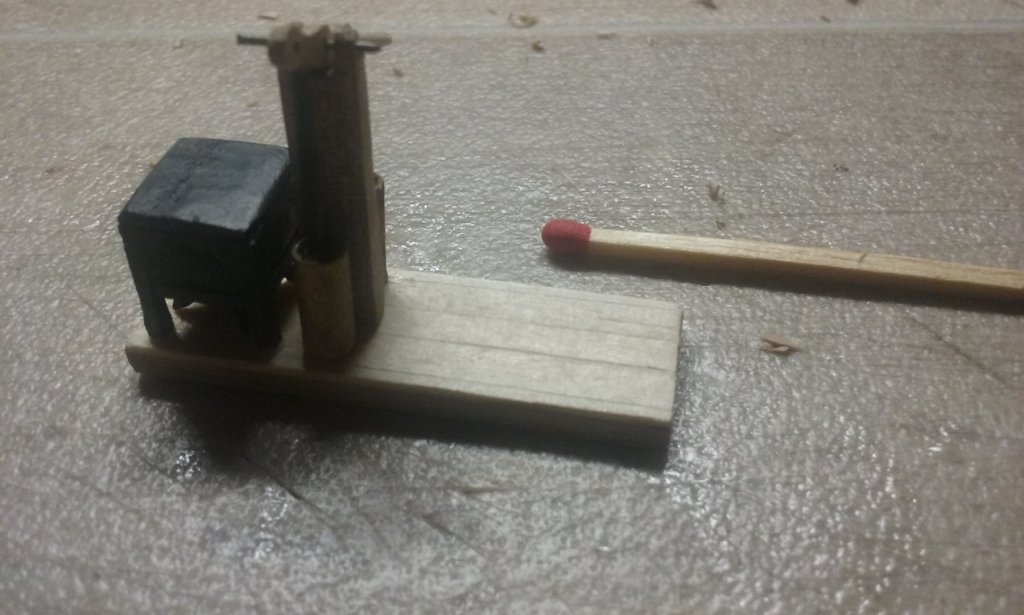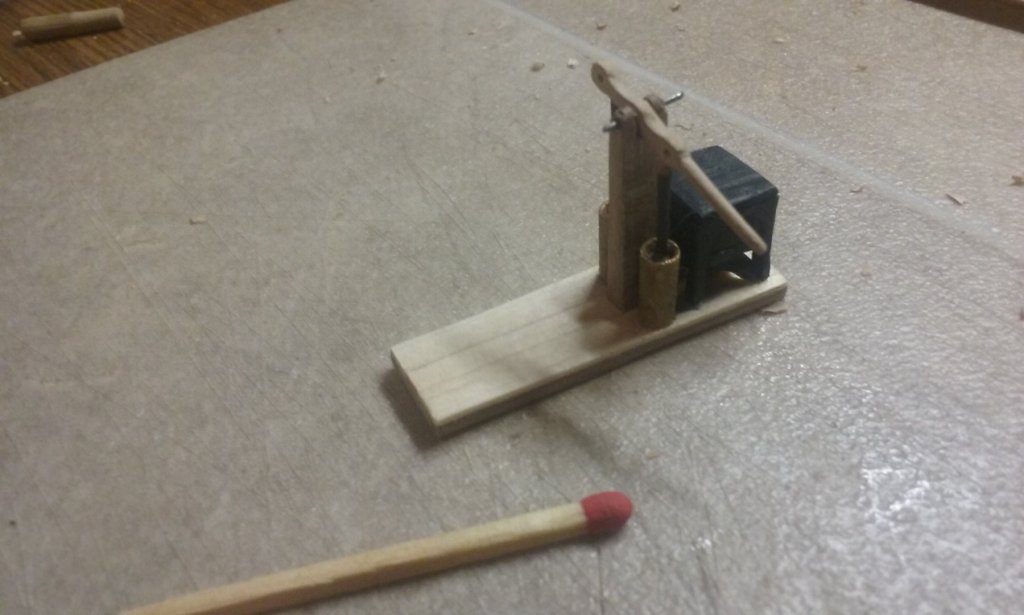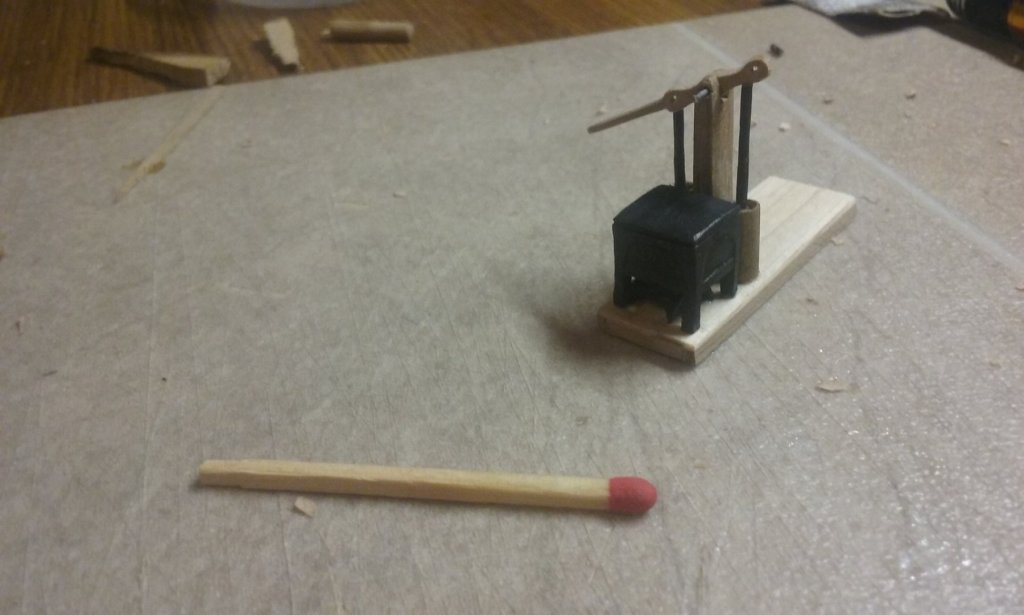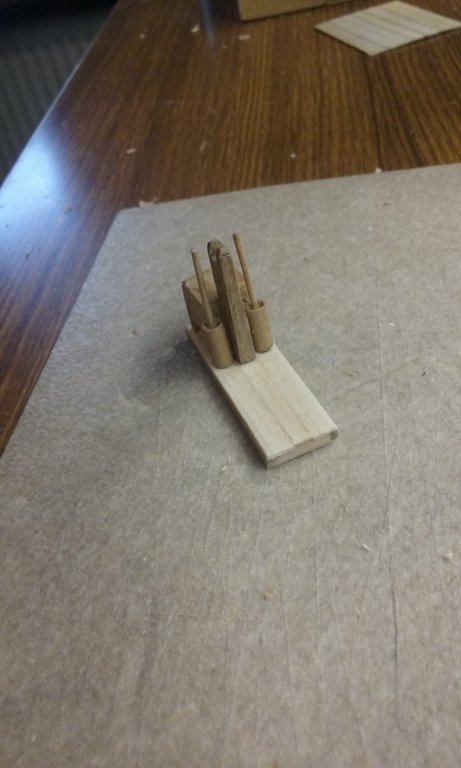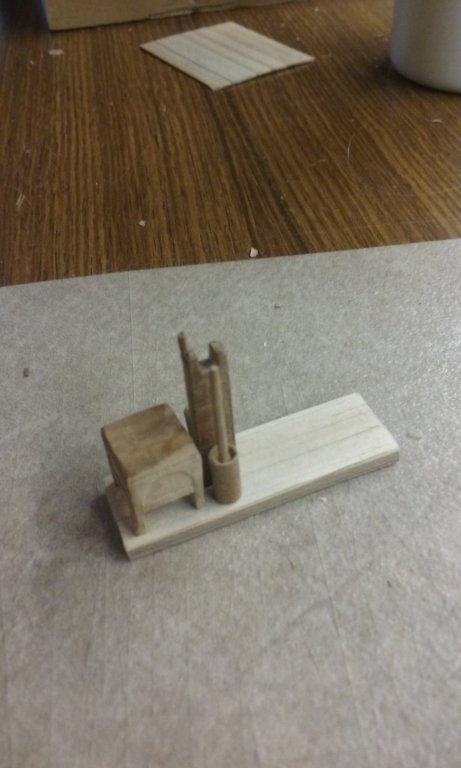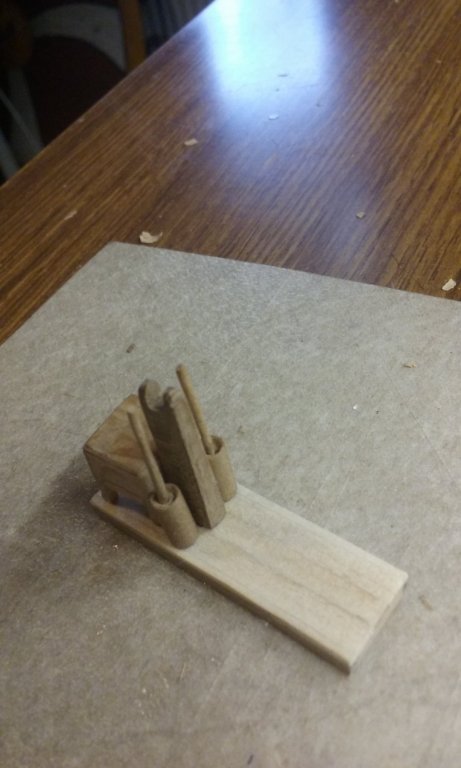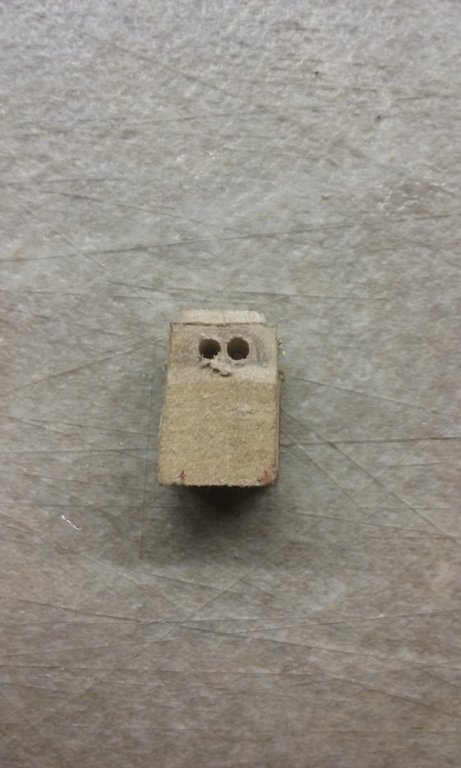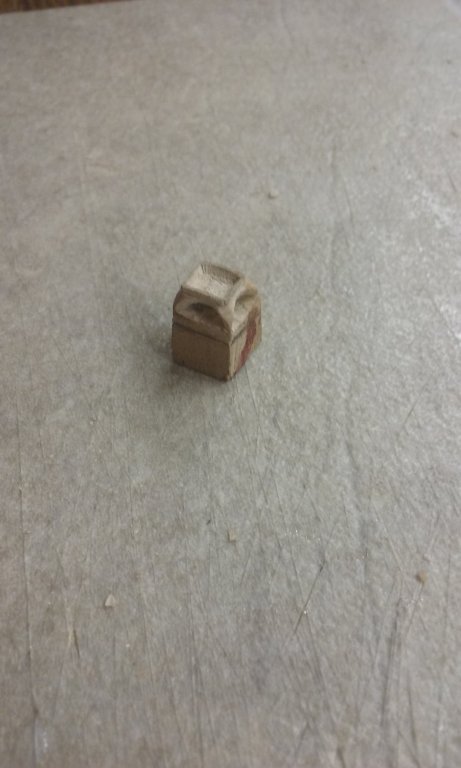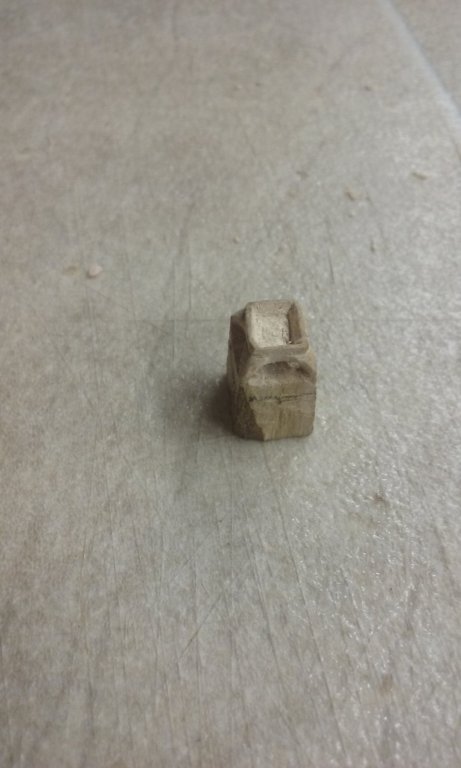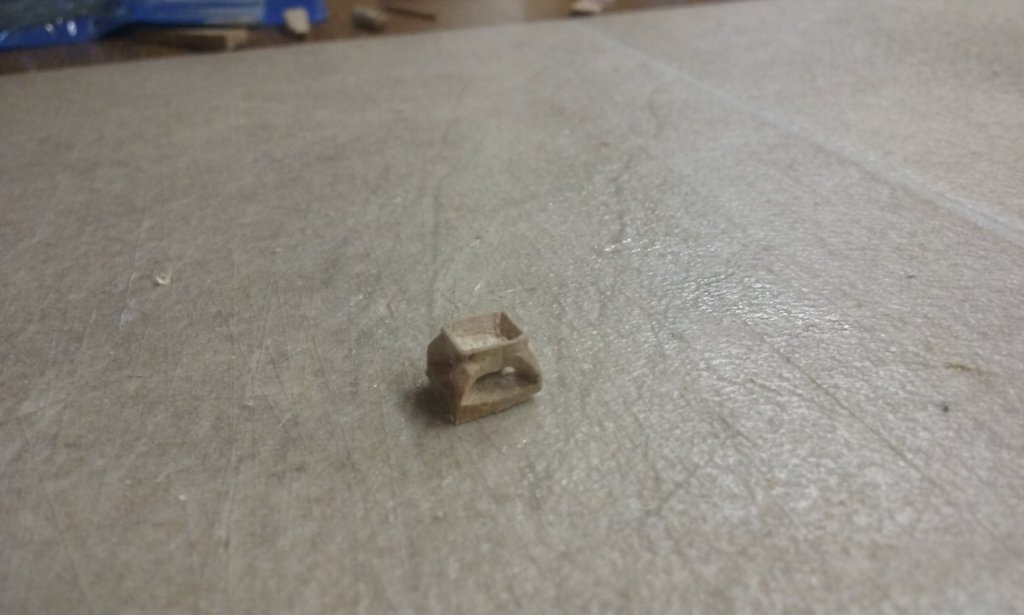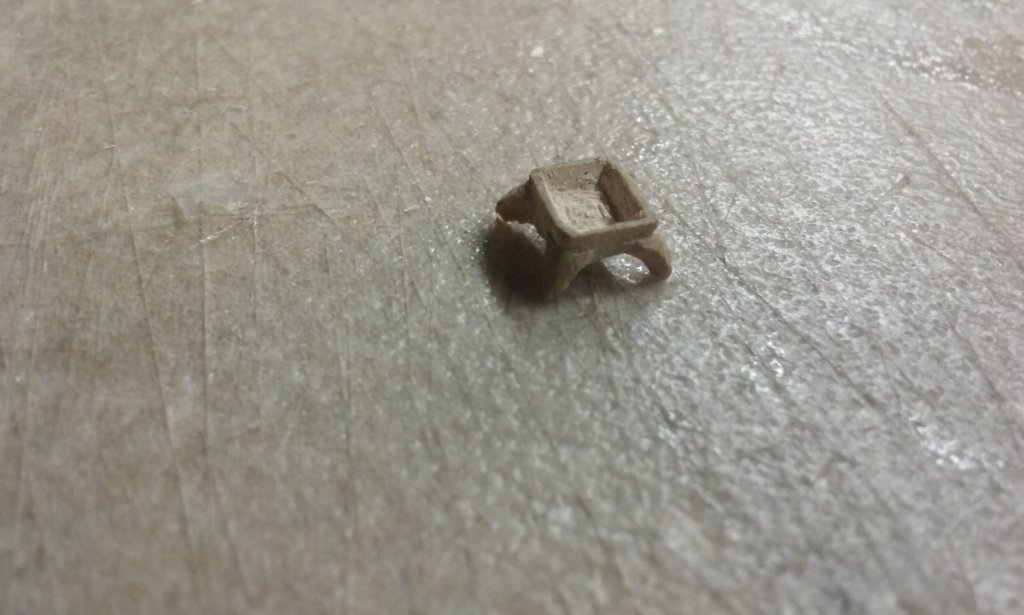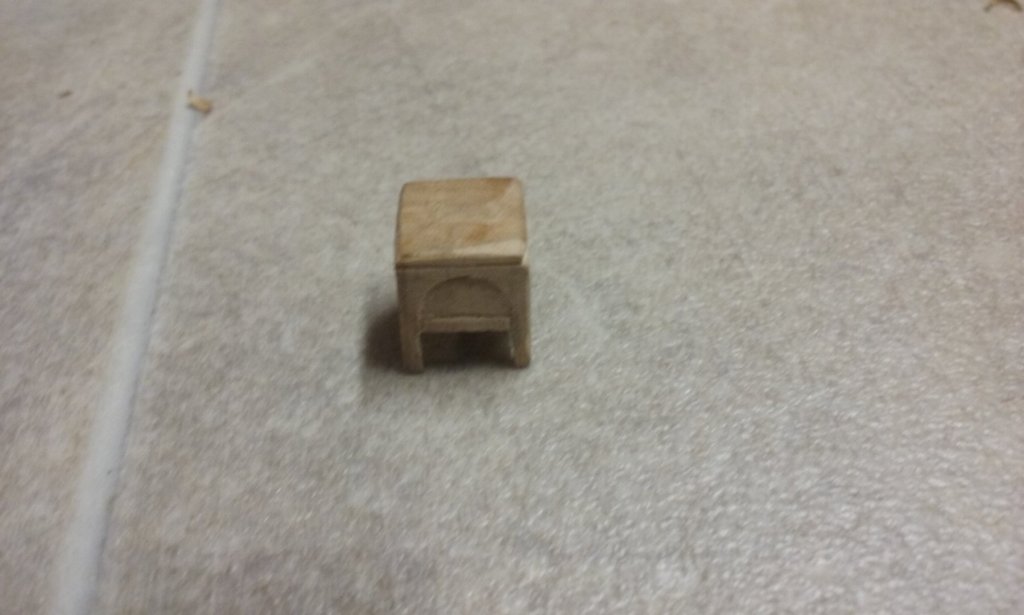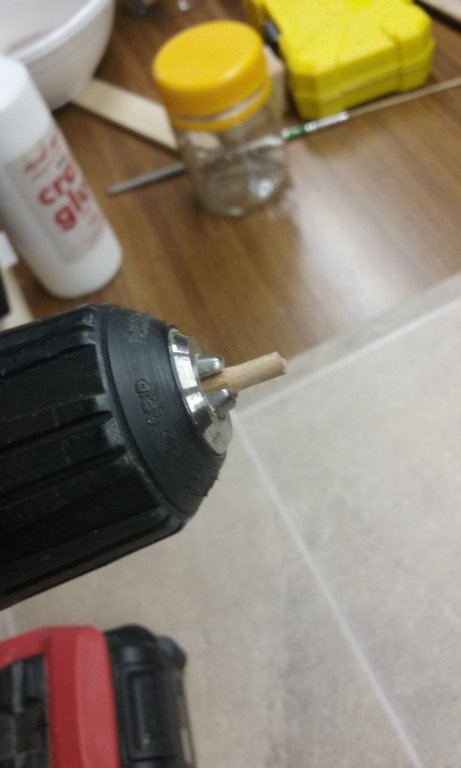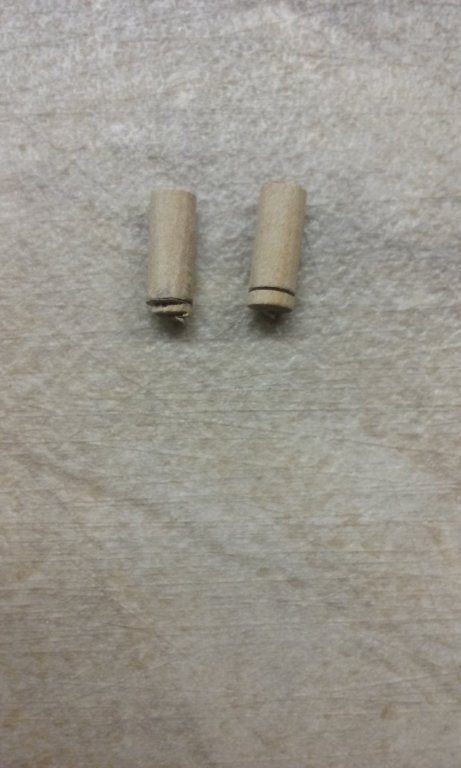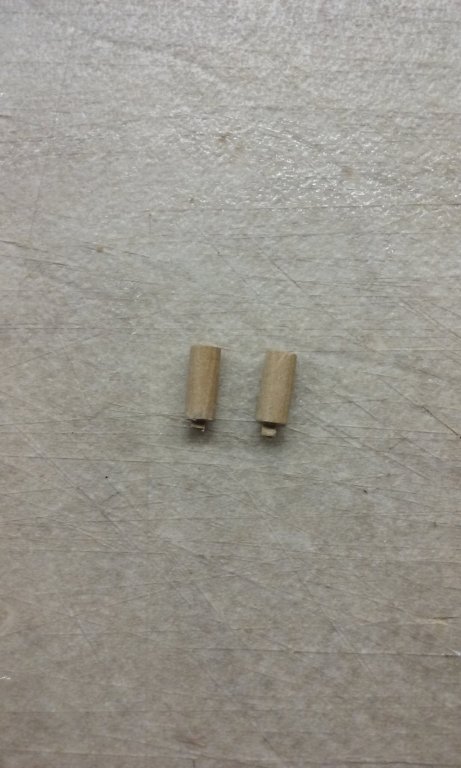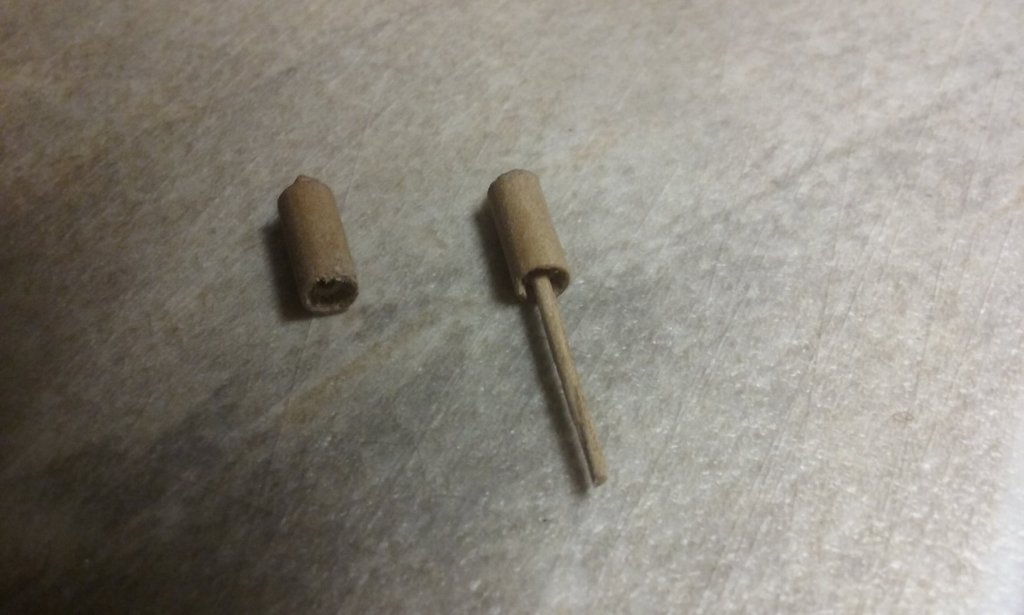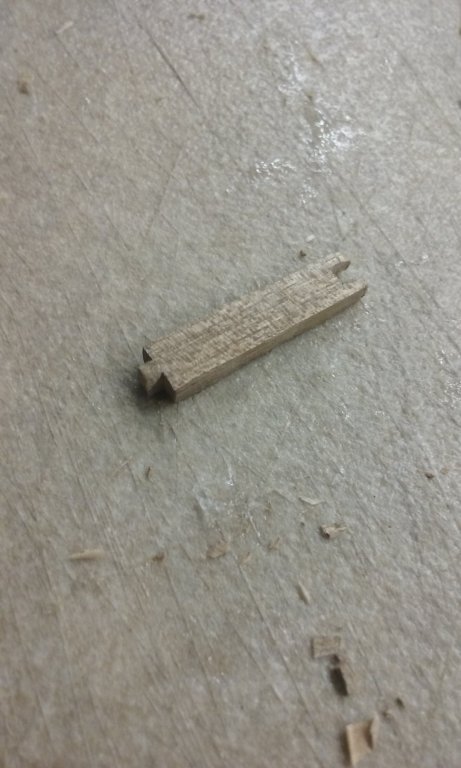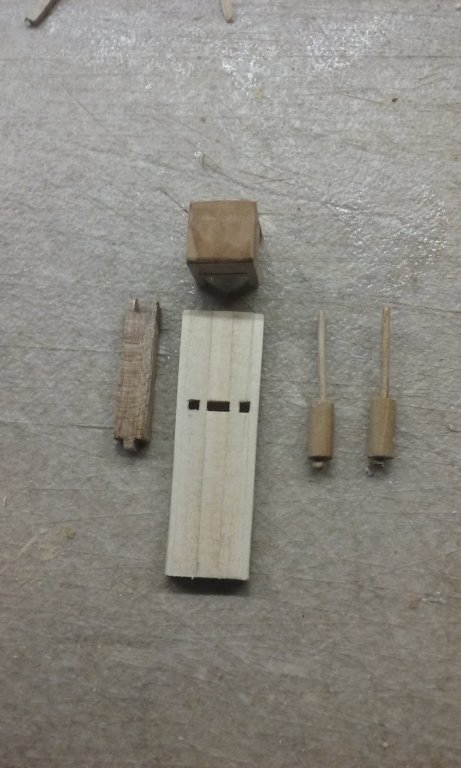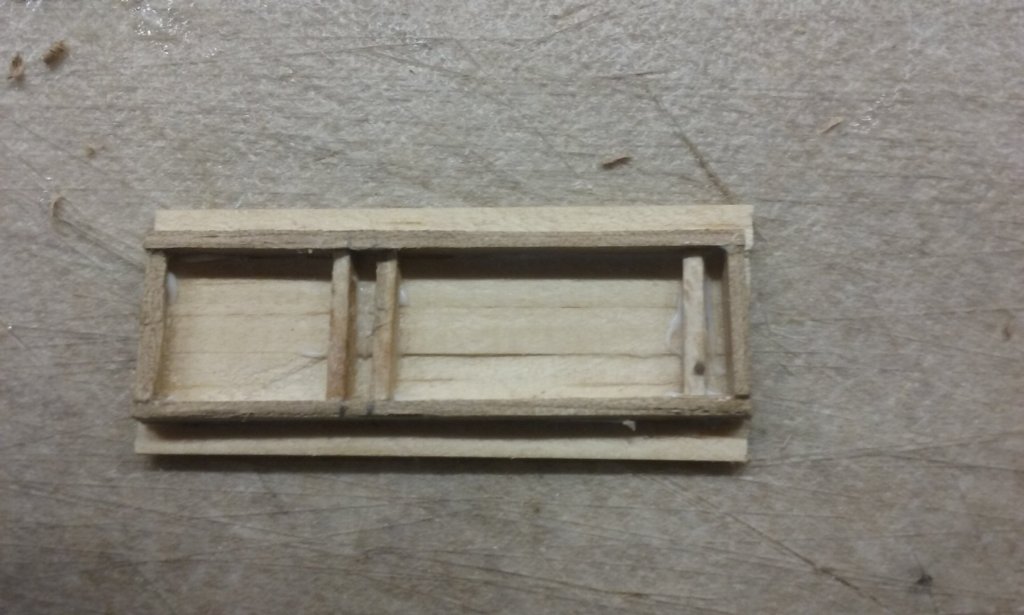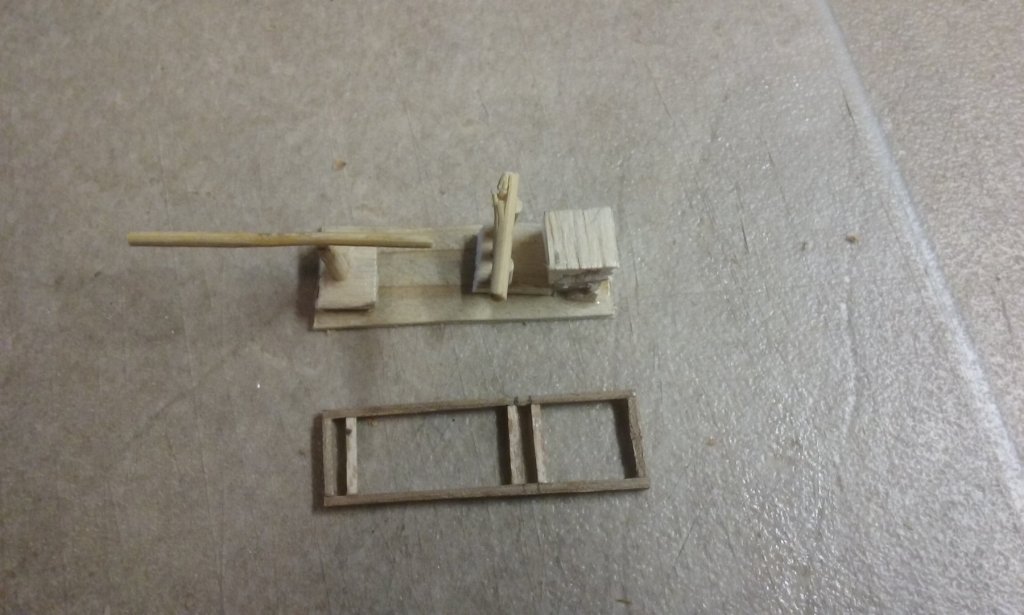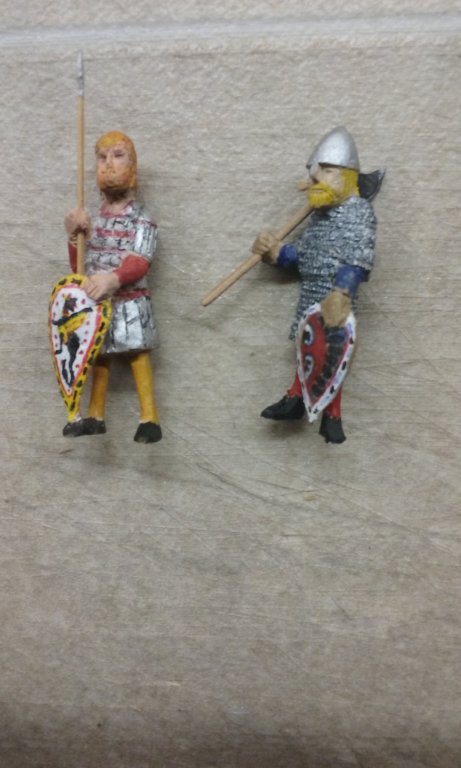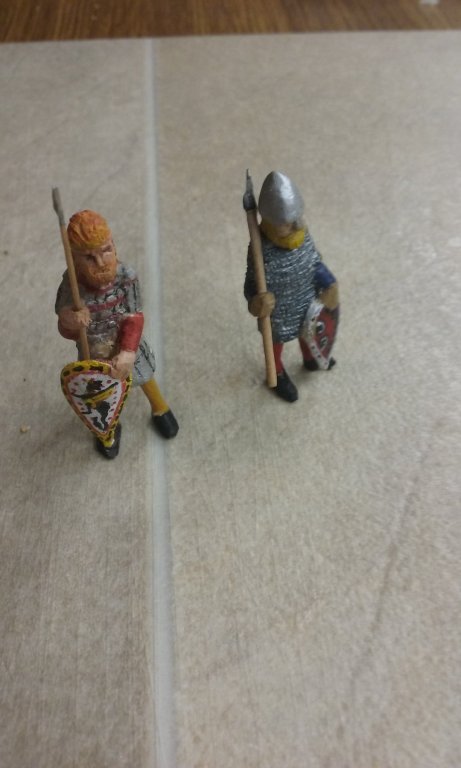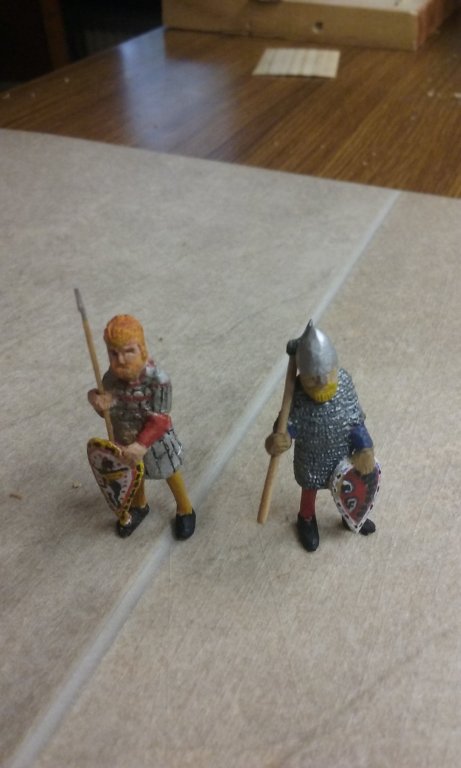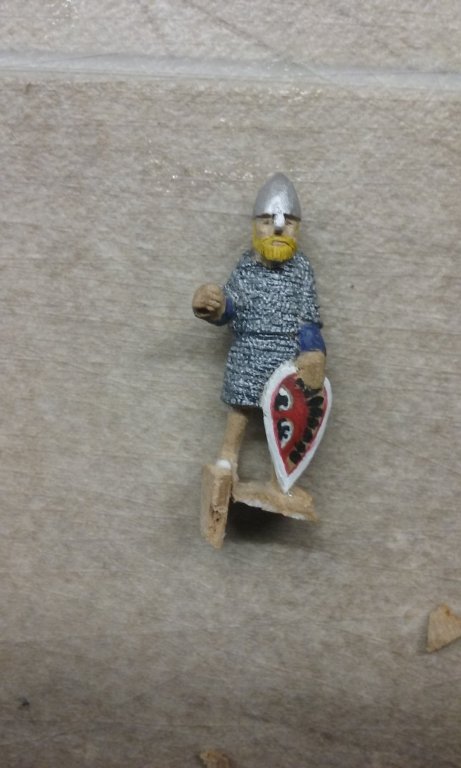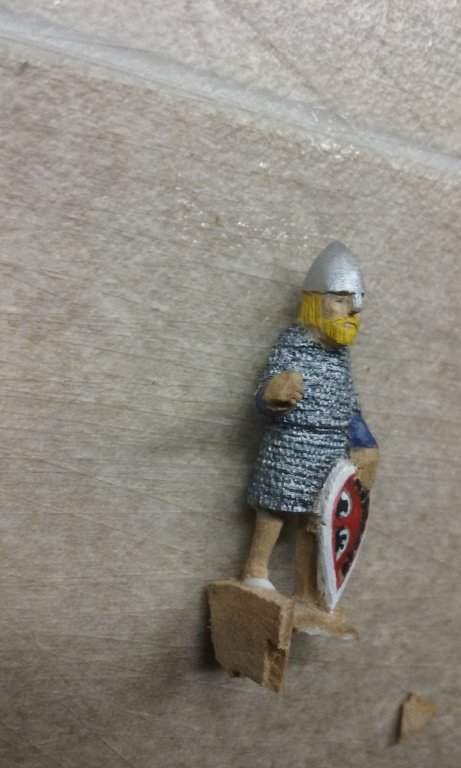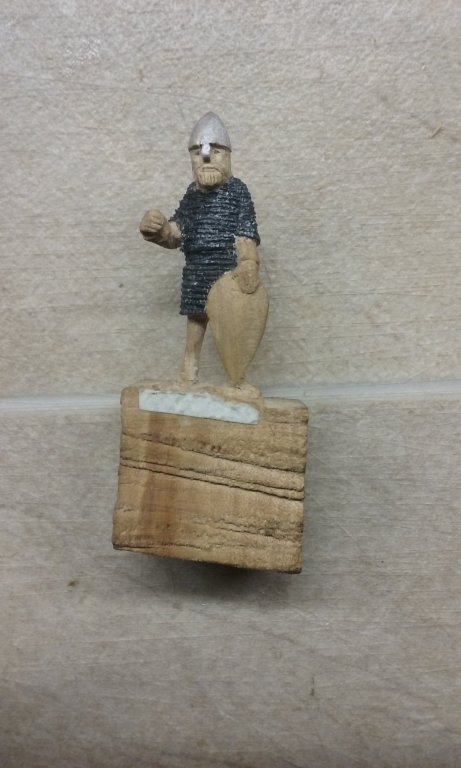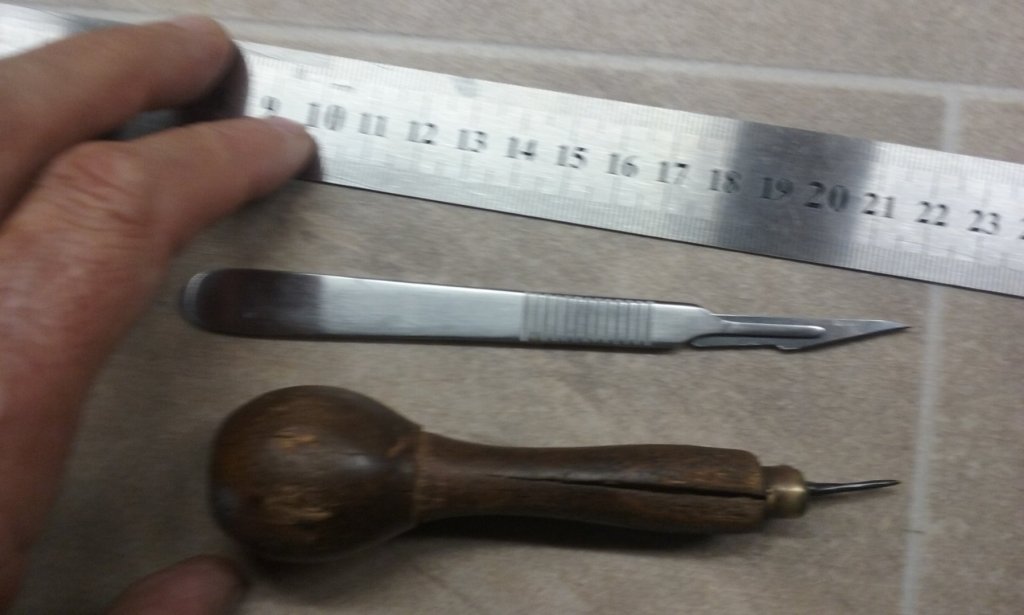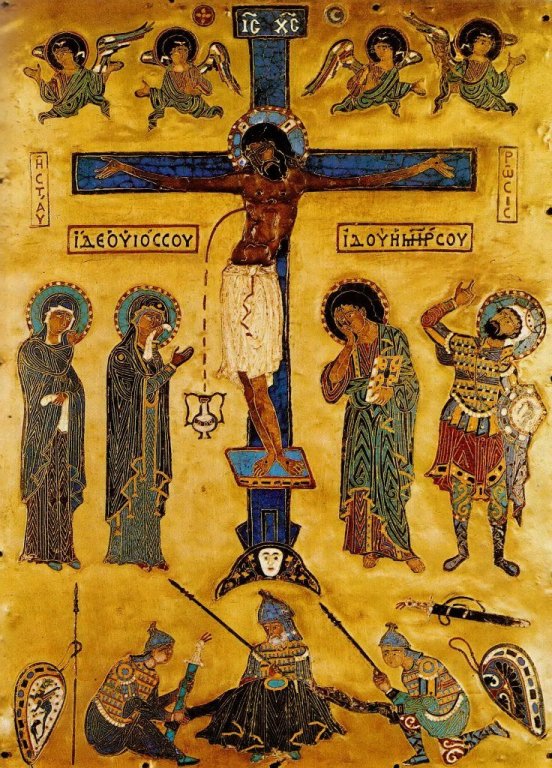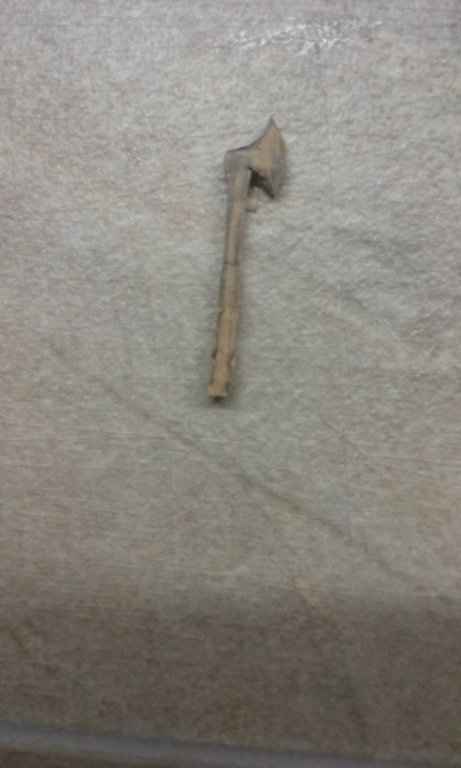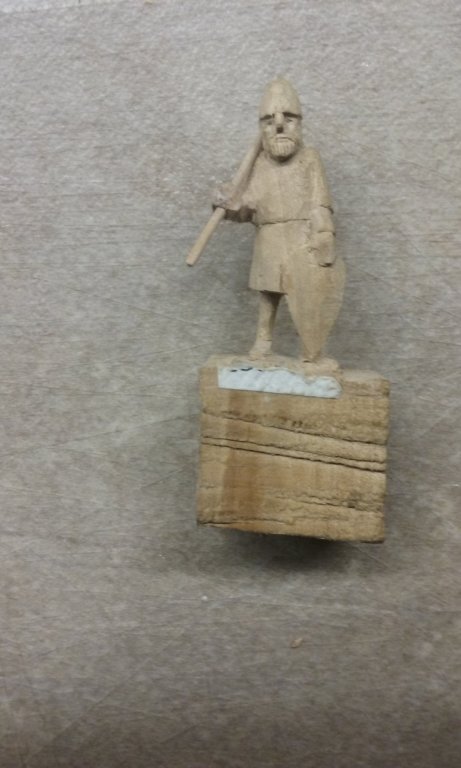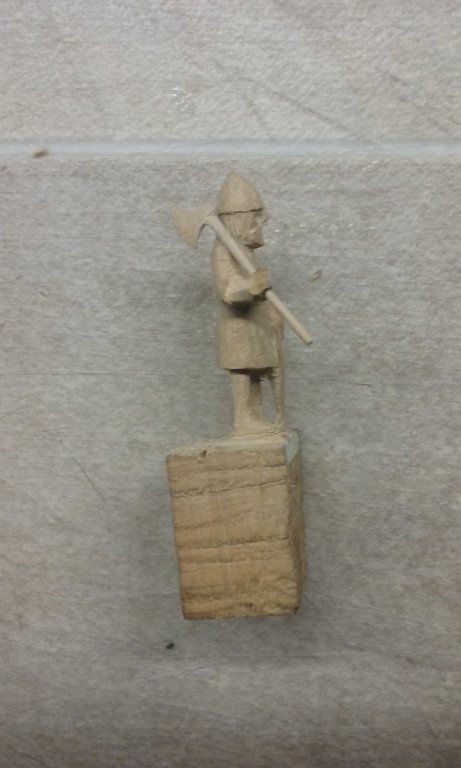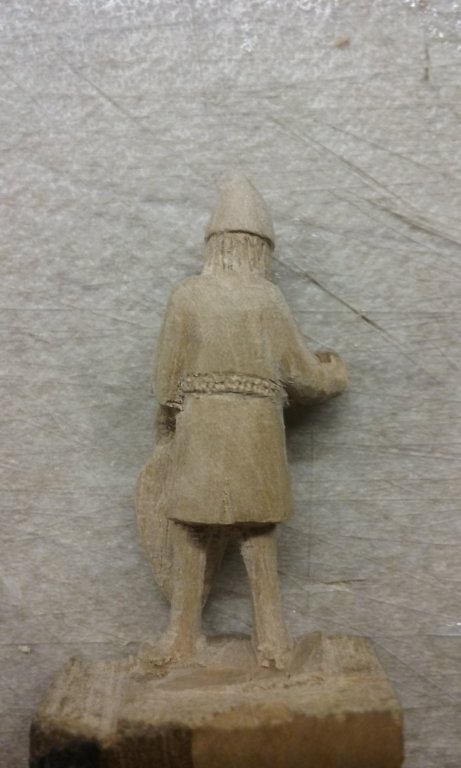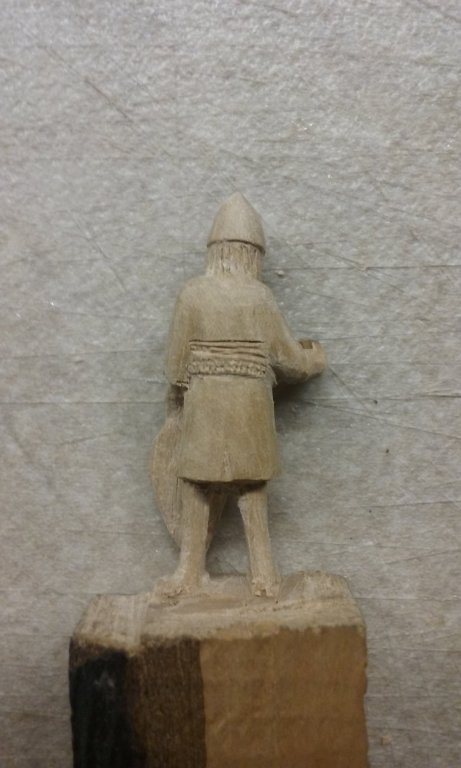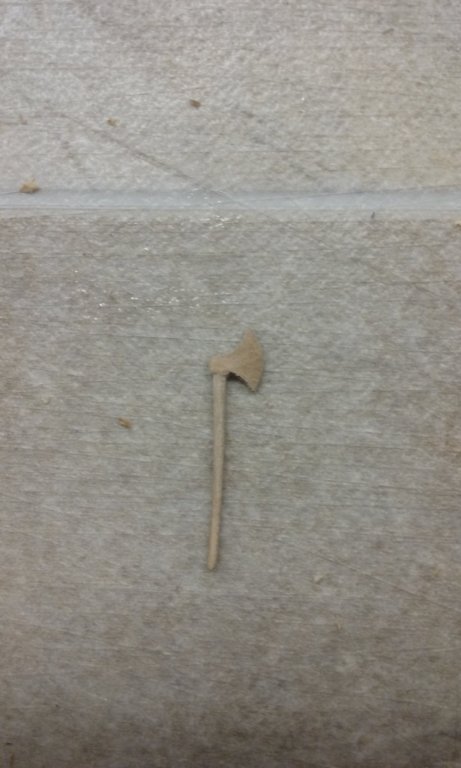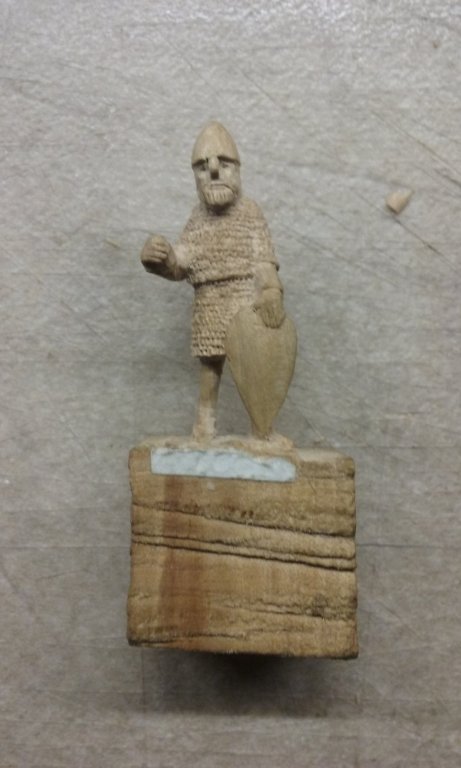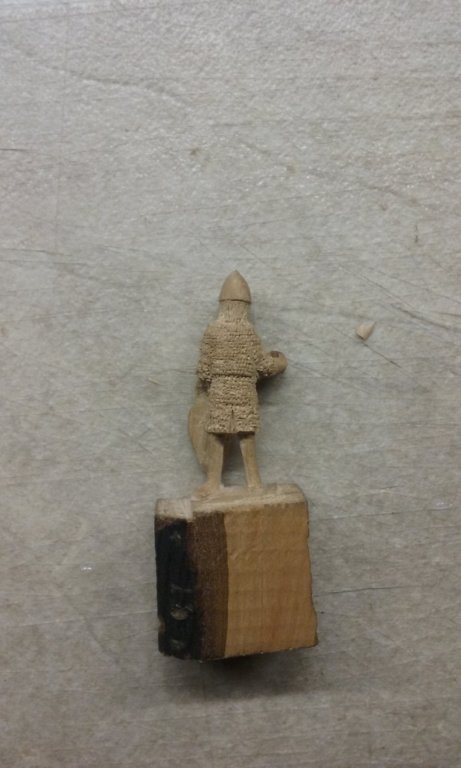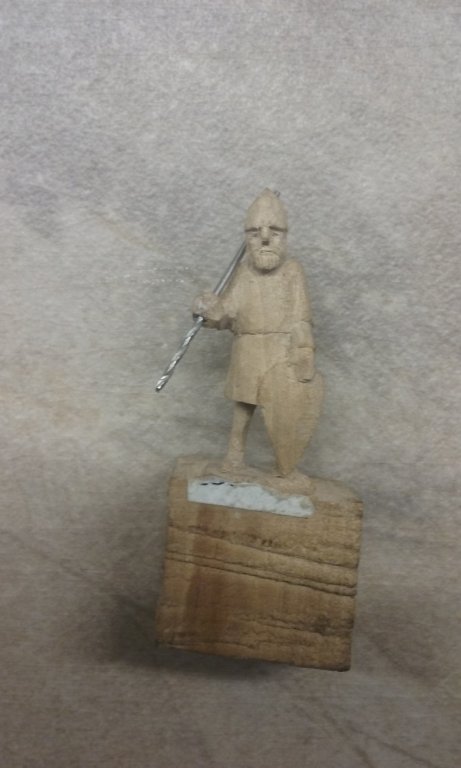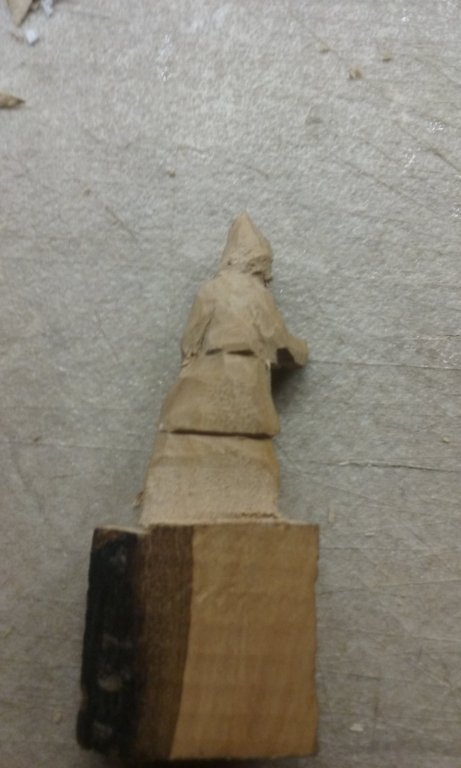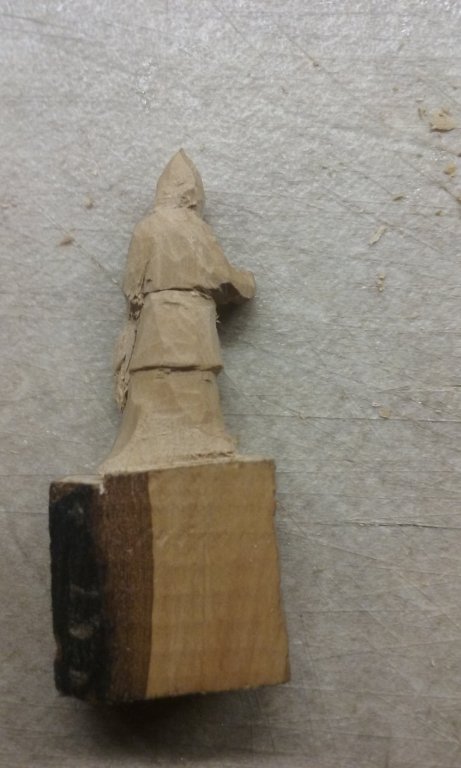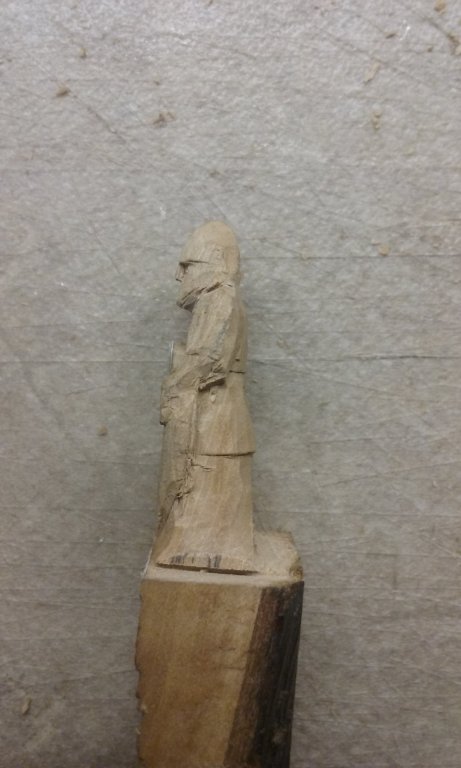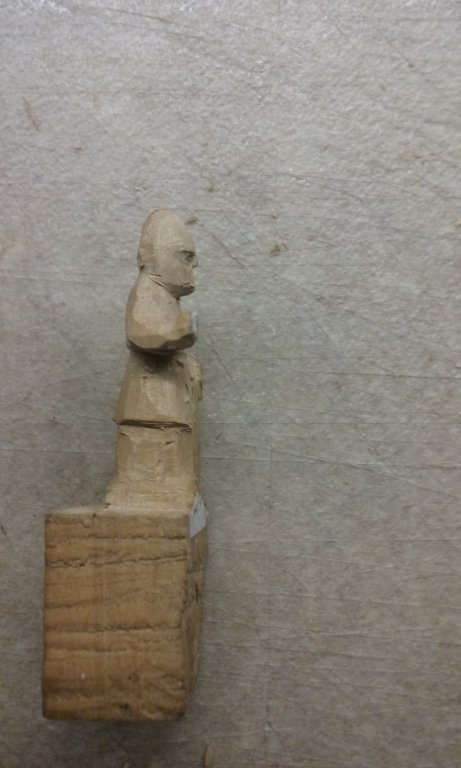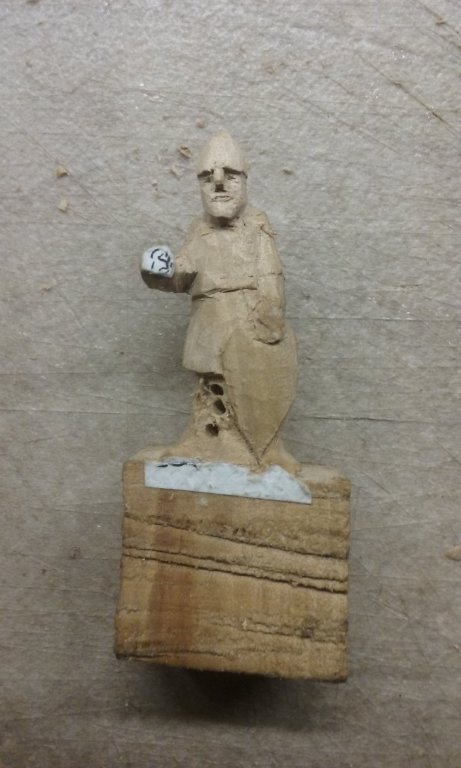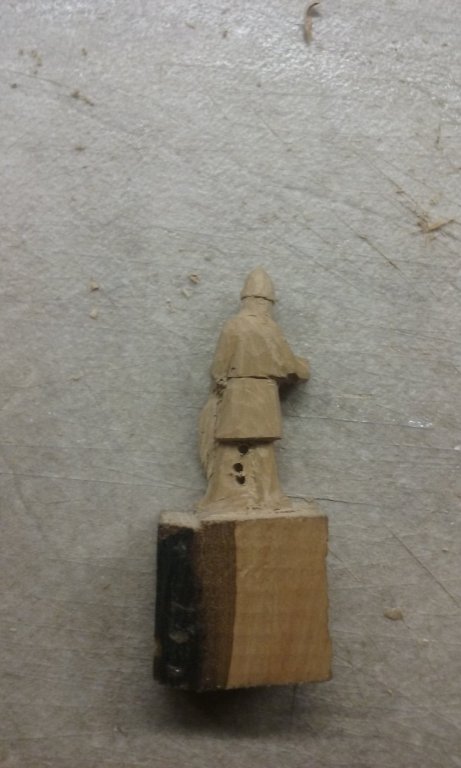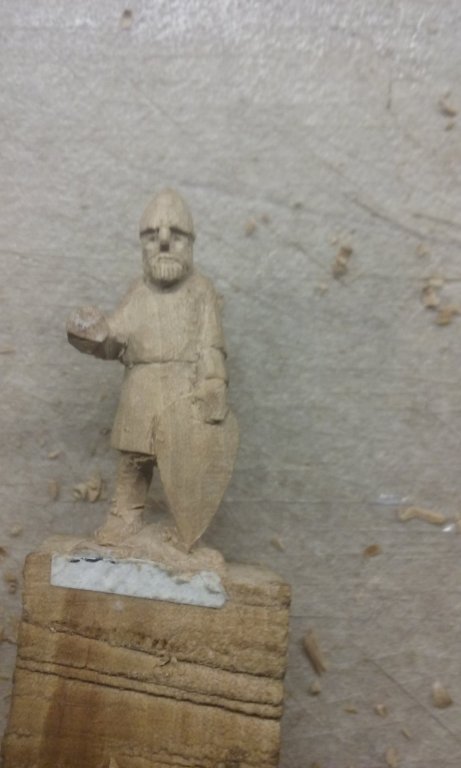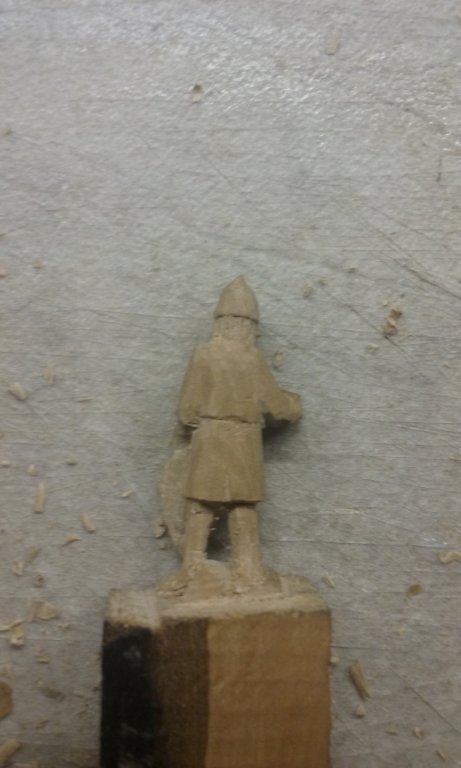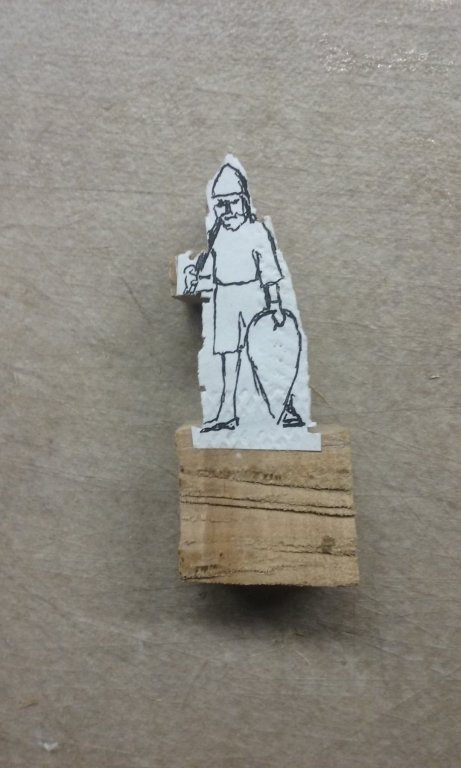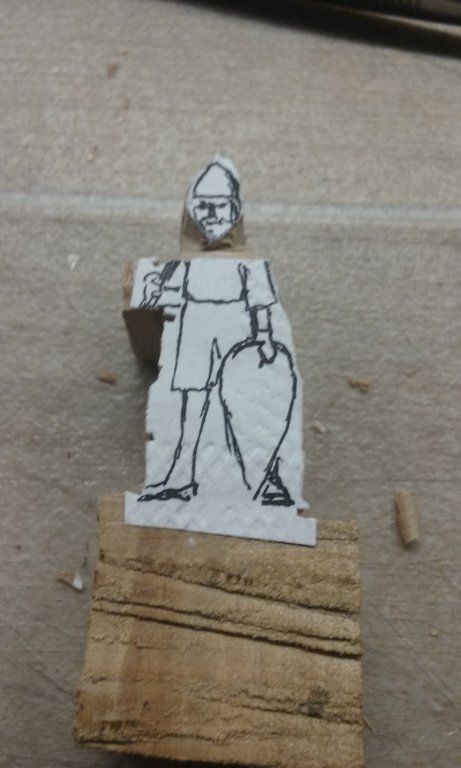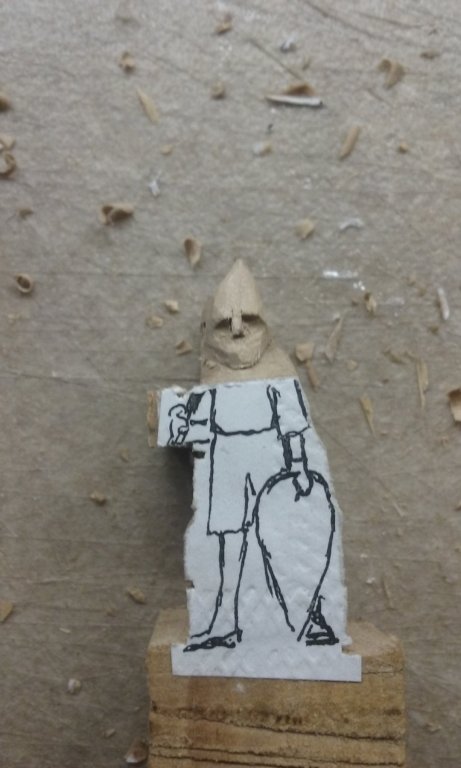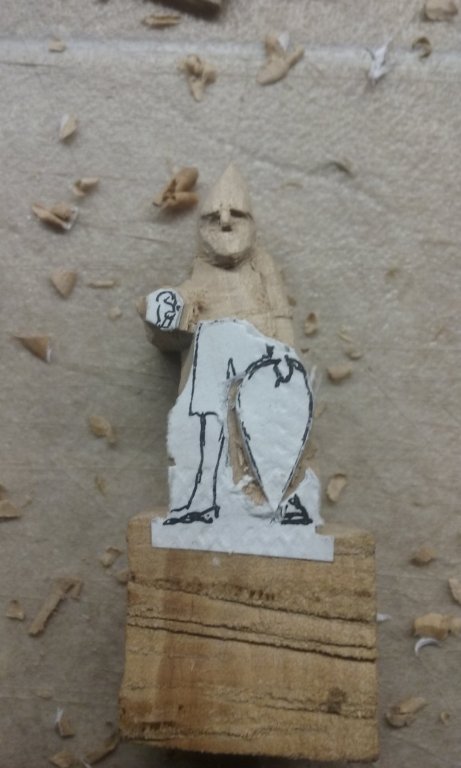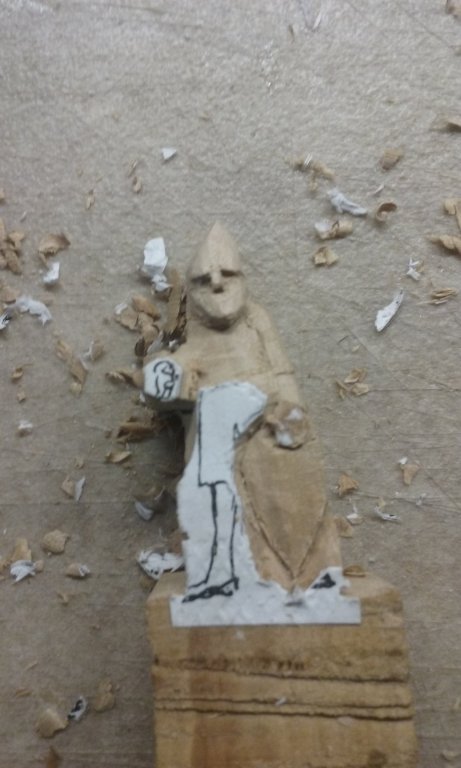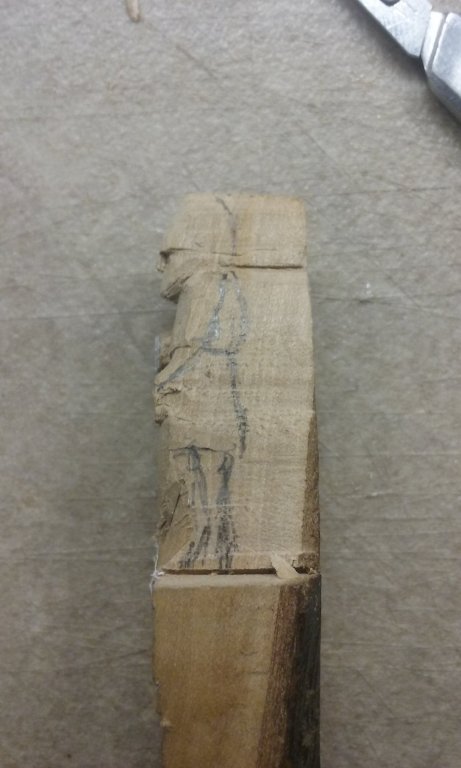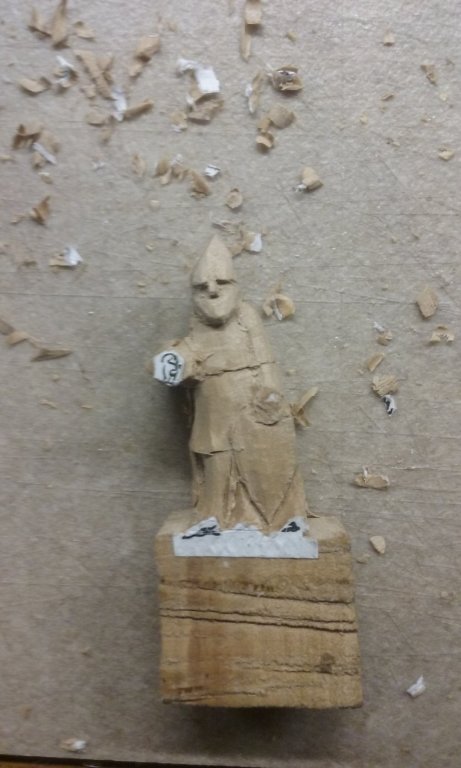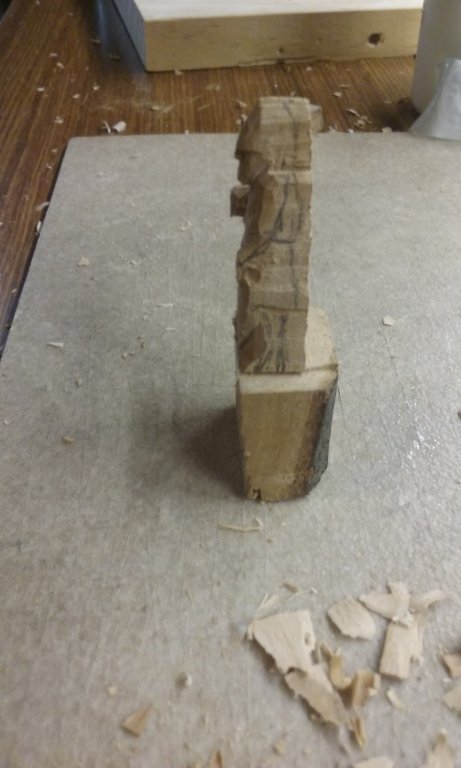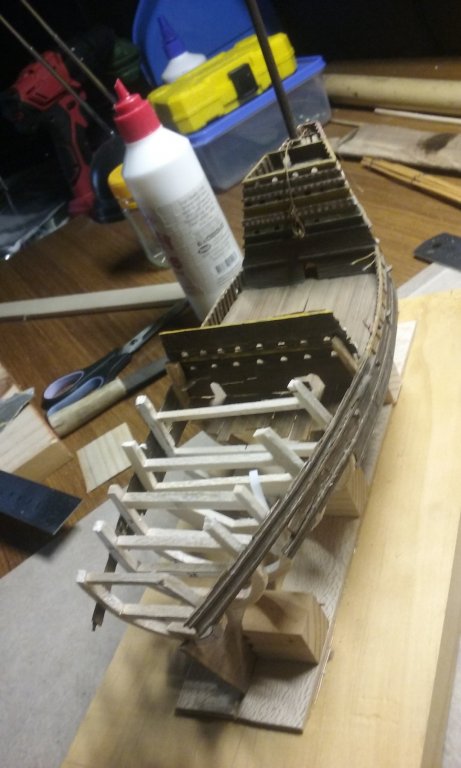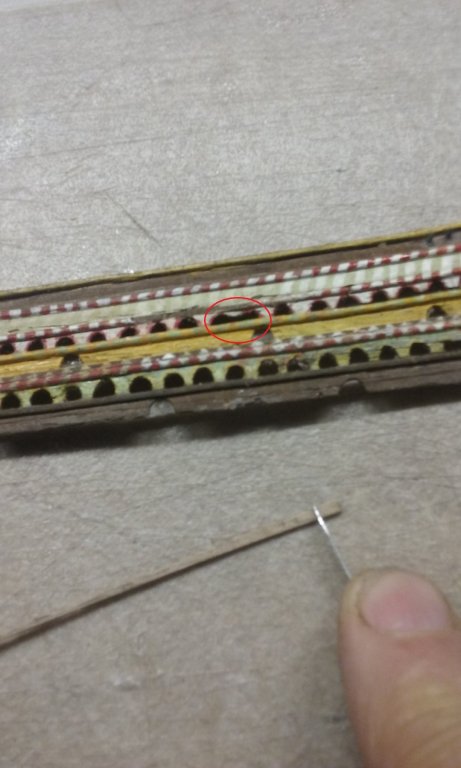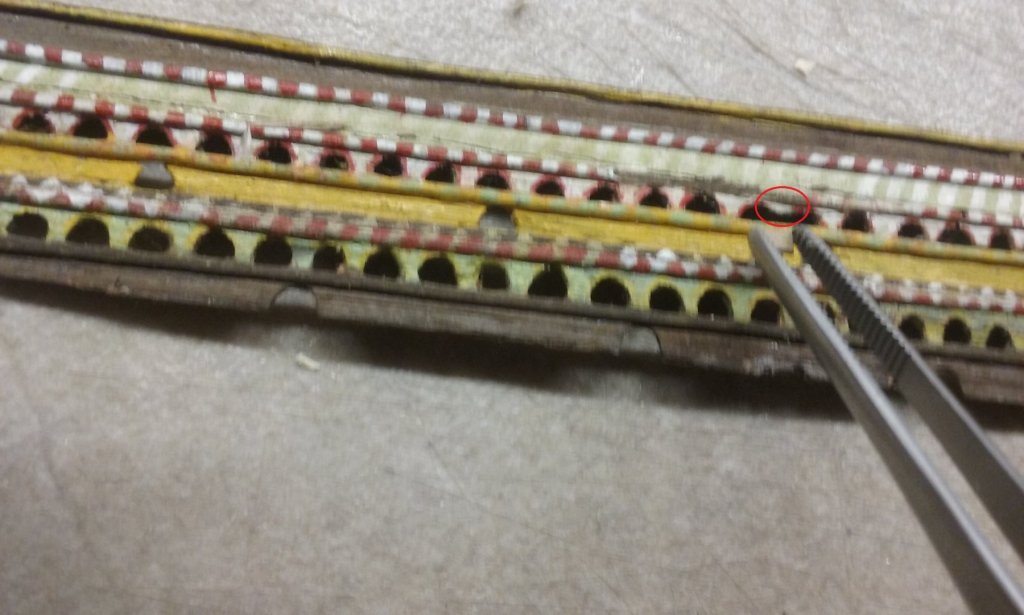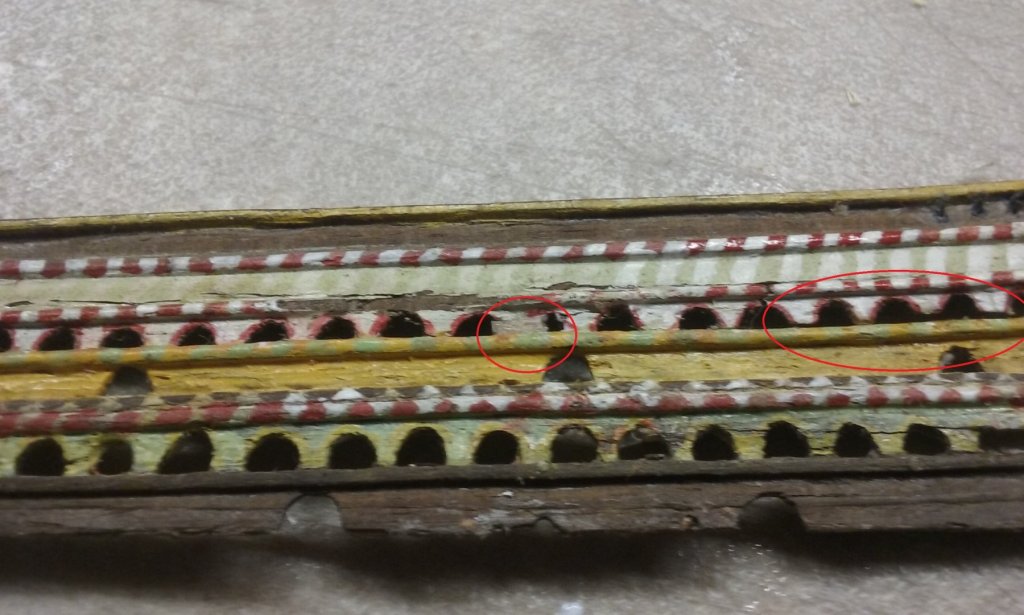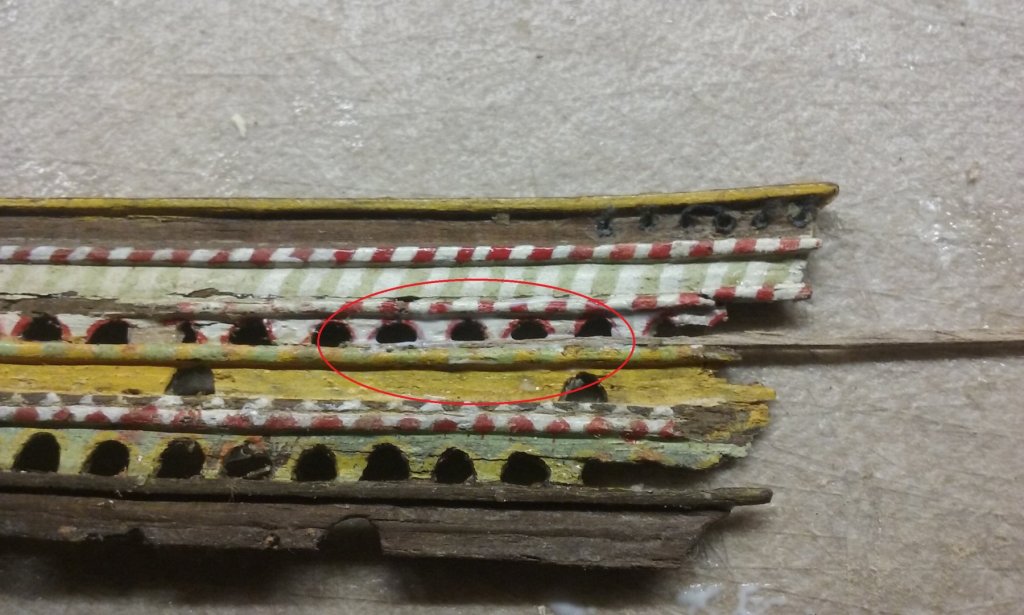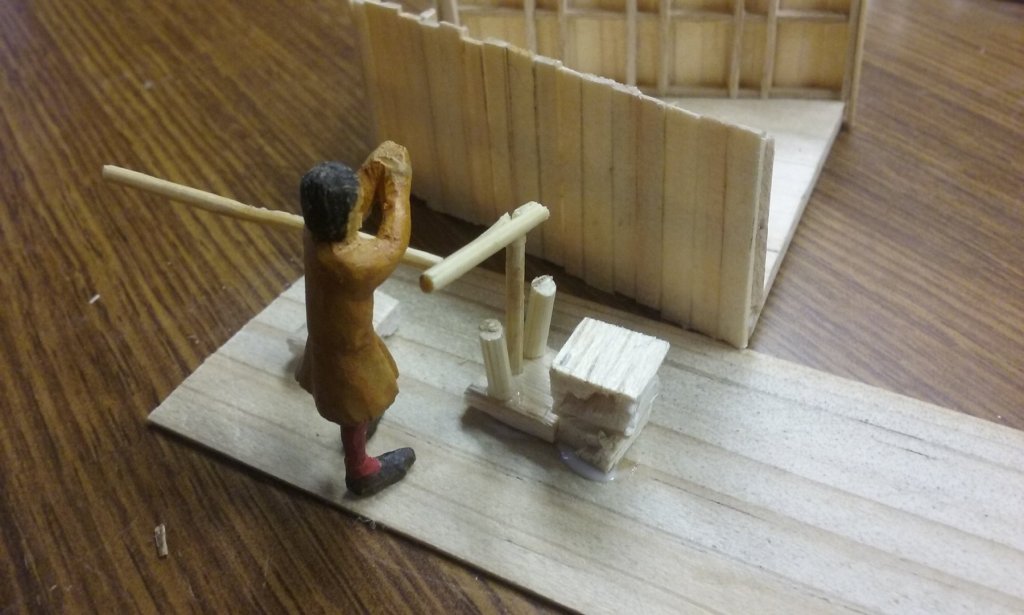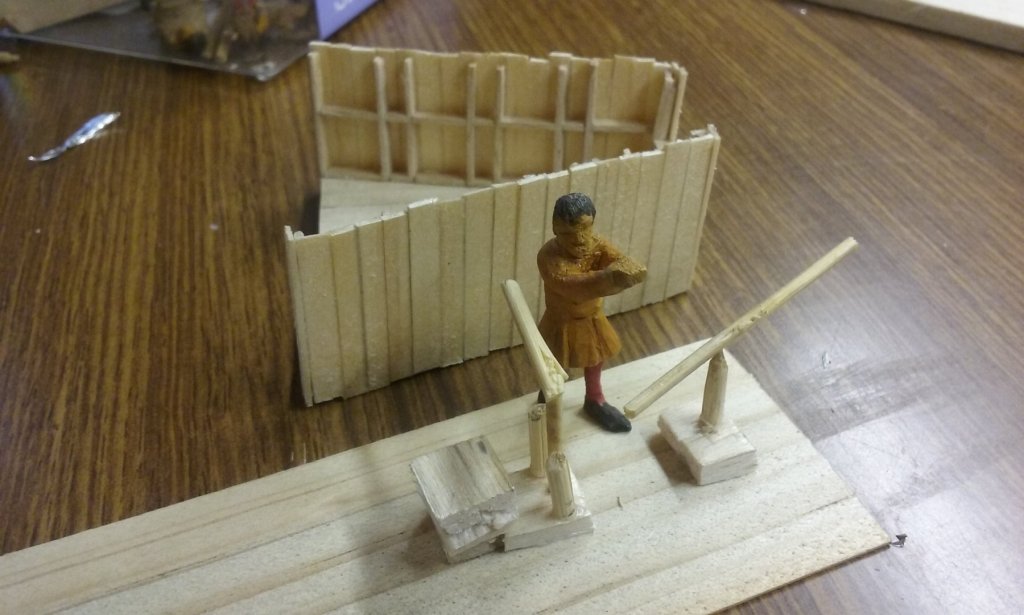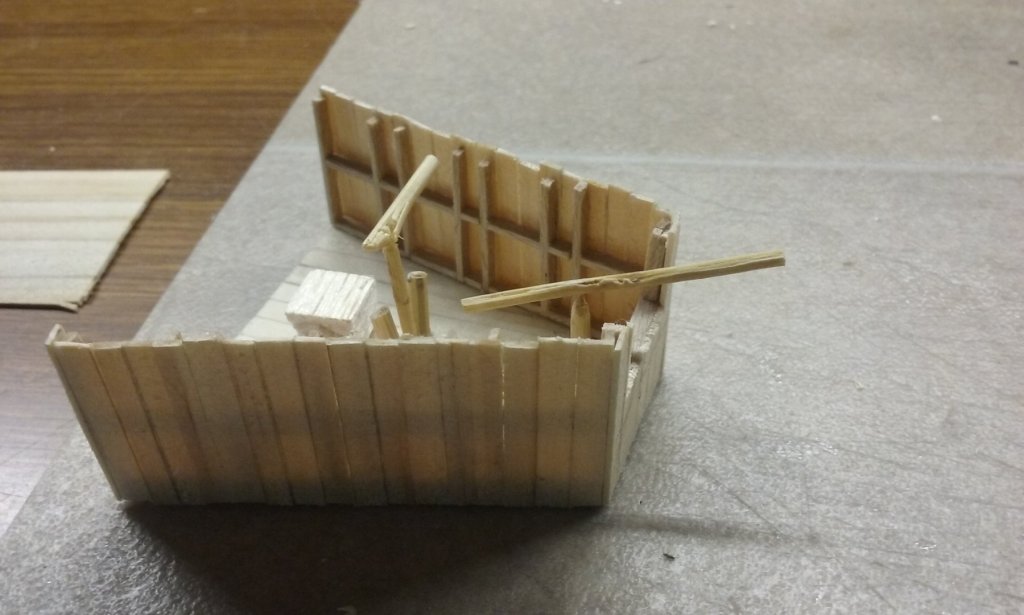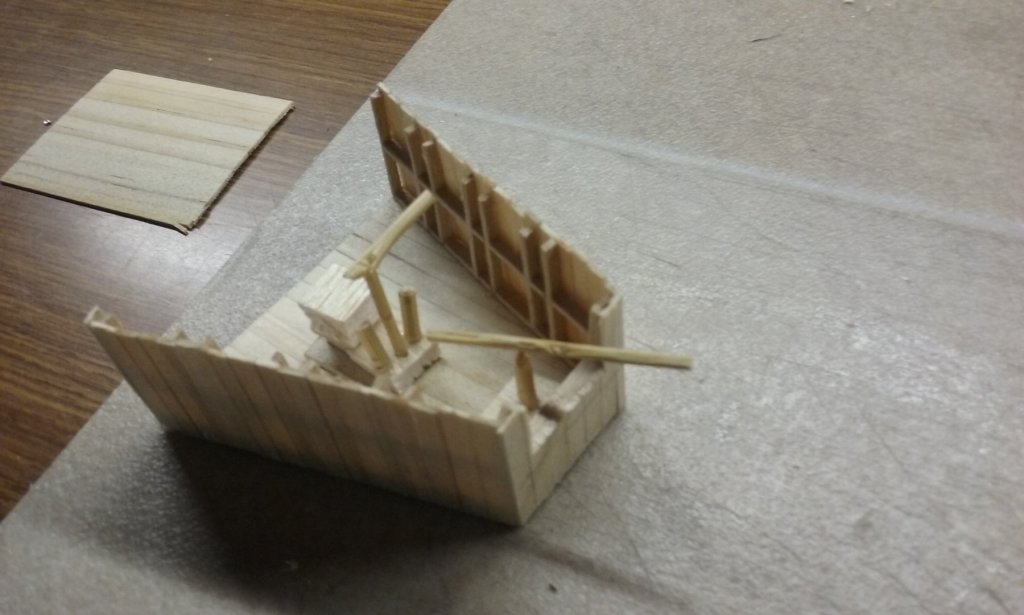-
Posts
7,973 -
Joined
-
Last visited
Content Type
Profiles
Forums
Gallery
Events
Everything posted by Louie da fly
-
Thanks for all the likes and for the supportive comments. In an earlier life I did mediaeval re-enactment and I used to be on a forum for people who make armour. My signature on the forum was "It's not really armour unless you've bled on it" 😀 Steven
-
This is beautiful work, Eric. Your build is a pleasure to follow. Steven
- 599 replies
-
- sidewheeler
- arabia
-
(and 4 more)
Tagged with:
-
And here is the pump handle marked out, ready for carving. All the above pieces painted and glued into place. I've put in a temporary pivot for the pump handle made from a bit of wire, and though I've drilled holes in the handle to take them, I have yet to figure out what kind of connectors I'll use between the con rods and the handle. Note the giant matchstick for comparison. The next thing is to make the assembly for the nozzle itself, then to add the pipes to carry the oil (fortunately the wire I'm using for the pivot is exactly the right diameter to replicate these). Steven
-
Here's the pump dry fitted And the brazier under way. Again it was to have legs, this time to keep the hot metal away from the deck. I decided to go a little more ornate this time, in line with (though considerably simpler) a brazier that appears in a contemporary Byzantine illustration with curved and tapered legs. Cutting the main body and drilling holes to start making the openings for the legs. Though not of this process, a little carelessness with the scalpel and - oops! A (fairly shallow) slice into the end of the thumb. My own fault, of course. As the Black Knight in Monty Python and the Holy Grail said "T'is but a flesh wound - I've 'ad worse." And getting back to work with a band-aid on the end of the thumb getting in the way. Naturally I've made the brazier empty; It would only be filled and lit when the siphon was to be used: Cutting off the "handle" bit I was using to hold the piece with: And finalising the shape: Steven
-
Thanks everybody for all the likes. I have to say I'm pretty happy with the way these figures are starting to turn out. Practice, practice, practice. It really seems to work! Now I'm moving on to the Greek Fire siphon. I decided that it was probably built as a self-contained unit so it could be hoisted onto the ship or off again as needed. So first I made a platform to take the unit. Here it is set against my bodgy rough version to get the spacing right. Here it is with the planking attached. Overlapping planks at the edges will be trimmed in line with the substructure. Then I got onto making the cylinders for the pump (from pear wood, which has a nice tight grain and is very suitable for carving). I first cut a long piece with a square section, then cut off the edges to make it octagonal, then circular, smoothing off with my "poor man's lathe" Cutting two cylinders to length, allowing for a tenon to fix them into the platform. Hollowing them out at the top to look like they have pistons in them) and making the connecting rods for the pump handle. Here is the support for the pump handle, with a cut-out for the handle and a tenon to fit into the platform. Here's the oil reservoir, with legs to sit above the brazier which heats the oil. And here they all are together, ready for dry fitting. Steven
-
I don't know how you do such fine work in metal. I'm pretty good with wood, but the moment I try making small stuff in metal I'm a complete klutz 😖. I have the greatest respect for anyone who can produce such exquisite workmanship. I take my hat off to you, sir! Steven
-
And here he is in full panoply complete with axe over the shoulder and along with his companion in arms, whom I've given the other escutcheon from the above ikon. Steven
-
Thanks, Mark. To cut the grooves I used the No. 11 scalpel. To make the "rings" I pushed the point of a cobbler's awl into the raised "lands" between the grooves to make shallow circular depressions as close together as I could make them. Unfortunately this would sometimes cause the whole "land" to lift for a couple of millimetres (wood has a grain and will do that kind of thing if you ask too much of it) and so it wasn't perfect. But the faults were pretty small and hardly visible with the naked eye. Then onto painting. First a coat of black to form a dark "shadow" background to the silver of the mail rings. Then several thin coats of silver to build up the colour of the rings. Unfortunately once the paint was on I discovered that in many places the "lands" were more obvious than the rings, so I had to re-do the depressions with the awl. Once done, however, it ends up looking very much like real mail. Unfortunately at this point I took my eye off the ball for just a moment. I was sawing off the base so I could finish off the legs and I cut too close and took off half his right foot. It can be remedied - I've glued another piece of pear wood on and will cut it to shape once the glue is properly dry. But very annoying! I've started painting the escutcheon ("coat of arms") on the shield, based on an 11th century Byzantine ikon (see the right-hand soldier at the bottom of the scene. Very fiddly to do, but rather satisfying to discover I can do fine work and have it look good. Steven
-
Moving onto the axe: Drilling a hole in the figure's hand to take the axe-shaft: And starting on the mail I discovered that this is about the limit I can manage with the tools I have; I think it looks much more like the real thing than the previous version. But it's very labour-intensive and fiddly and I ended up wondering why I'd started. Merciful oblivion covers the next 8 hours or so: And here's the figure with the mail all complete. Next - painting! Steven
-
Roughing out the back of the figure - again, cutting away around the bits closest to the surface. Giving it a bit of shape: and refining it still further. Now drilling holes to separate the legs. Have to be very careful with this - if the hole intrudes into the wood you want to keep (such as a leg), there's no way of recovering it. Roughing out the shape of the legs and cutting away behind the shield. More to come, Steven
-
I finally decided I wouldn't be able to live with the coarsely detailed "Russian tractor armour" the Varangian guard was wearing, so I carved a new one with finer mail, this time with a two-handed battle-axe - as described by Princess Anna Komnena in "The Alexiad" her biography of her father Emperor Alexios I, "The Varangians too, who carried axes on their shoulders, regarded their loyalty to the Emperors and their protection of the imperial persons as a pledge and ancestral tradition, handed down from father to son, which they keep inviolate, and will certainly not listen to even the slightest word about treachery." I timed how long it took to make from go to whoa - about 8 hours to carve the figure, and another 8 to do the mail. Never again! I also photographed the full sequence. First a drawing of the figure in spirit pen, which I photocopied (in case of Murphy's Law) and stuck the copy onto a piece of pear wood. Then cut around the outline with a coping saw. I left a decent amount of wood below the figure so I had something to hold onto while I was working on it. Next, cutting around the head - firstly this is one of the parts that are closest to the surface of the piece of wood and second I like to do the face early because if I get that wrong I might as well throw the figure away and start again. Cutting around the head first, trying to retain as much of the picture as possible for as long as possible. I use a scalpel with a No. 11 blade for all this work. It's very important to use a very sharp one. Cutting the main features of the head Now moving down to the arms and shoulders, cutting progressively further and further back. The right arm sticks out forward, as he'll be holding an axe in it. Now moving onto the shield, which is also fairly far forward. Again I cut around the outline first and then cut away a bit to form the hand that's holding the shield. Here is the figure with the front elevation roughed out. Next draw an outline to guide the coping saw in cutting off the waste at the back of the figure. After cutting. Still leaving a good grip to hold the figure while it's being worked on. More to come, Steven
-
Very narrow and not very stable. Apparently the rowers could tell if someone was walking about on the top deck by the alterations to the trim. Steven
- 73 replies
-
- mediterranean
- galley
-
(and 1 more)
Tagged with:
-
A nice size. About the only reliable dimension I know of for the length of galleys is that the length of the ship is determined by the interscalium (distance between the rowing benches). The optimum is about a yard, give or take - longer and the ship becomes too heavy; shorter and the oarsmen get in each other's way. So a twenty-oared galley would have ten interscalia = about 30 feet - plus the length of the prow and the stern. If you want to make a trireme, you might be interested in this video - Enjoy! Steven
- 73 replies
-
- mediterranean
- galley
-
(and 1 more)
Tagged with:
-
Very nice work, Luponero. This is a very impressive model, beautifully detailed. Steven
- 197 replies
-
- santa maria
- carrack
-
(and 1 more)
Tagged with:
-
Just out of interest, Vic, how long are these galleys? I realise they're not all to the same scale, but they all seem to be of similar length. Steven
- 73 replies
-
- mediterranean
- galley
-
(and 1 more)
Tagged with:
-
Yes, contemporary representations often don't bother to show the blocks etc, and sometimes don't even show the ropes. One source that might be helpful is at http://nautarch.tamu.edu/academic/alum.htm - you may find archaeological artefacts that will help. TAMU covers ships from the entirety of time and often has papers on this kind of thing. Steven
- 73 replies
-
- mediterranean
- galley
-
(and 1 more)
Tagged with:
-
Um . . . what mediocre workmanship? They look very good to me. In my experience, ship modellers worry far more than necessary about tiny failings in their own work which nobody else can see. If you're really concerned about some error, just regard it as a learning experience rather than as a fault - something you'll handle better next time. But just keep on with these galleys - I think they look great, and something to be proud of. Steven
- 73 replies
-
- mediterranean
- galley
-
(and 1 more)
Tagged with:
-
Changed the frames a bit, and worked out the approximate line of the upper deck. Starting to look better, but now I have to put in the deck beams and adjust them to get a smooth line. Because I'm fixing up something existing there's a lot of ad hoc work to be done, and I'm making the deck beams from balsa because it's much easier to trim and adjust by trial and error with than a harder timber. And I've started repairing the superstructure in readiness to put the sides back in place - a lot of minor breaks in the planking and particularly the little arched gunports (for small arms). Cutting a small piece of walnut sheet the same thickness as the planking putting it in the gap; and gluing it in place so it overlaps into the arch opening on each side. Taking note of the next gap to be repaired; And gluing a strip of walnut in place to fill the gaps. Photos of this scale and definition bring it home to me that at 17 years old I had a lot to learn about model ship building. But it's nice to be restoring something that's both a very sentimental possession and a record of my own earlier life. Steven
- 740 replies
-
- Tudor
- restoration
-
(and 4 more)
Tagged with:
-
Mark, I've already made one guardsman in lamellar armour (that's like upside down scale) - see my post of - ye gods! Is it that long ago? - May 14, 2017. I'd like to have the other one wearing mail because they're so different (and were both common in the Empire). After a bit of study I've roughed out a preliminary bodge-up for the siphon, based mostly on Richard Windley's design. I still think it was rather poor form, however, that though his design is simply an improvement on the Haldon siphon that was successfully tested 6 years previously the History Channel programme apparently gave Haldon no acknowledgment at all. My bodge-up is just bits of balsa and bamboo skewers, to get the spatial relationships worked out for it to fit on the forecastle, and also amend the forecastle itself to make sure it will fit. Note that I've made the pump handle single-sided, because there's so little room on the forecastle and there's no need for a double-sided handle. Steven
-
You're making a very nice spread of galleys of different eras and locations. I like it. Steven
- 73 replies
-
- mediterranean
- galley
-
(and 1 more)
Tagged with:
-
Thanks everyone who added a "like". Grandpa Phil, Goetzi and Patrick, thanks for the comments. Druxey, what can I say? The two-handed axe is the Queen of the battlefield. Before the battle began a bunch of axemen stood in front of the English line swinging their axes around their heads. I thought it looked a bit Hollywood/Disneyland, but apparently the guys on the Norman side were horrified . . . Christos, thank you very much. I'm not totally certain I've reached the limit, but I suppose unless I make another figure and try even finer detail, I won't know. I'm still thinking about that one. Pat; thanks regarding the mail, but I won't be doing any more armoured figures - I did one earlier in the log and this is the only extra I'll be making. The Emperor is usually shown with just two guards and a bunch of courtiers. On the other hand, I still have to make 50 oarsmen, but I'm intending to cast them. Carving's too much work. I'm going to have to do a fair bit of design work for the siphon. Might take awhile. Steven
-
I've been working on the forecastle and have started thinking about the Greek Fire projector or siphon which will be mounted on it. There's been a lot of work done on theoretical reconstructions of the siphon, particularly by John Haldon who is probably the world authority on the subject, having worked on it for 25 years. Here's a Youtube video of a reconstruction in action to John Haldon's plans, even using the light grade crude oil from central Turkey that was available to the Byzantines. Funny thing is, an independent guy called Richard Windley (?) made a reconstruction in 2008 which has considerable advantages, particularly in that it can be operated by a single person. In Byzantine times only a single crew member, one of the lead oarsmen - was the siphonator, with the duty of operating the projector. However, this reconstruction doesn't have a brazier heating the oil, he uses a modern fuel and the directing mechanism seems a bit frail. And unless I've missed something, though his reconstruction is obviously based on Haldon's design he doesn't seem to give Haldon credit. Very worthwhile information in both, and I'll be ensuring the shielding against heat and fire is of a similar level to these. My own model will combine aspects of both these designs. But it won't be made workable - I'm not completely nuts. Steven
About us
Modelshipworld - Advancing Ship Modeling through Research
SSL Secured
Your security is important for us so this Website is SSL-Secured
NRG Mailing Address
Nautical Research Guild
237 South Lincoln Street
Westmont IL, 60559-1917
Model Ship World ® and the MSW logo are Registered Trademarks, and belong to the Nautical Research Guild (United States Patent and Trademark Office: No. 6,929,264 & No. 6,929,274, registered Dec. 20, 2022)
Helpful Links
About the NRG
If you enjoy building ship models that are historically accurate as well as beautiful, then The Nautical Research Guild (NRG) is just right for you.
The Guild is a non-profit educational organization whose mission is to “Advance Ship Modeling Through Research”. We provide support to our members in their efforts to raise the quality of their model ships.
The Nautical Research Guild has published our world-renowned quarterly magazine, The Nautical Research Journal, since 1955. The pages of the Journal are full of articles by accomplished ship modelers who show you how they create those exquisite details on their models, and by maritime historians who show you the correct details to build. The Journal is available in both print and digital editions. Go to the NRG web site (www.thenrg.org) to download a complimentary digital copy of the Journal. The NRG also publishes plan sets, books and compilations of back issues of the Journal and the former Ships in Scale and Model Ship Builder magazines.




